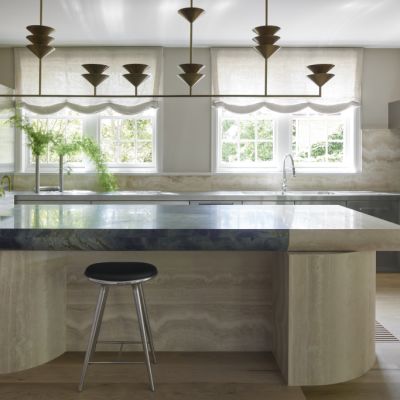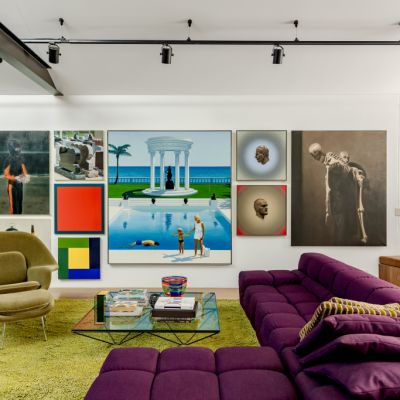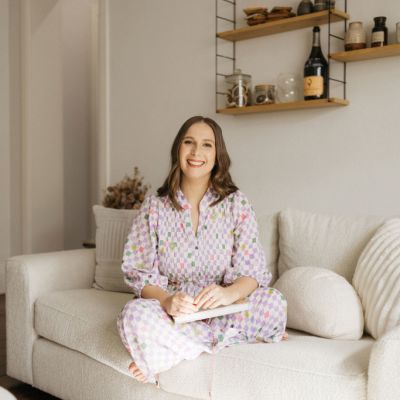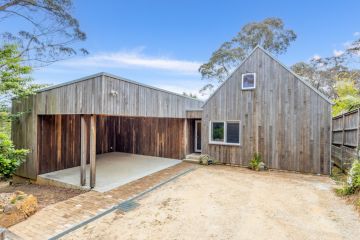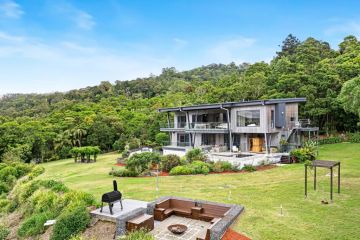How marble’s timeless elegance and unique veining are shaping modern home and interior design
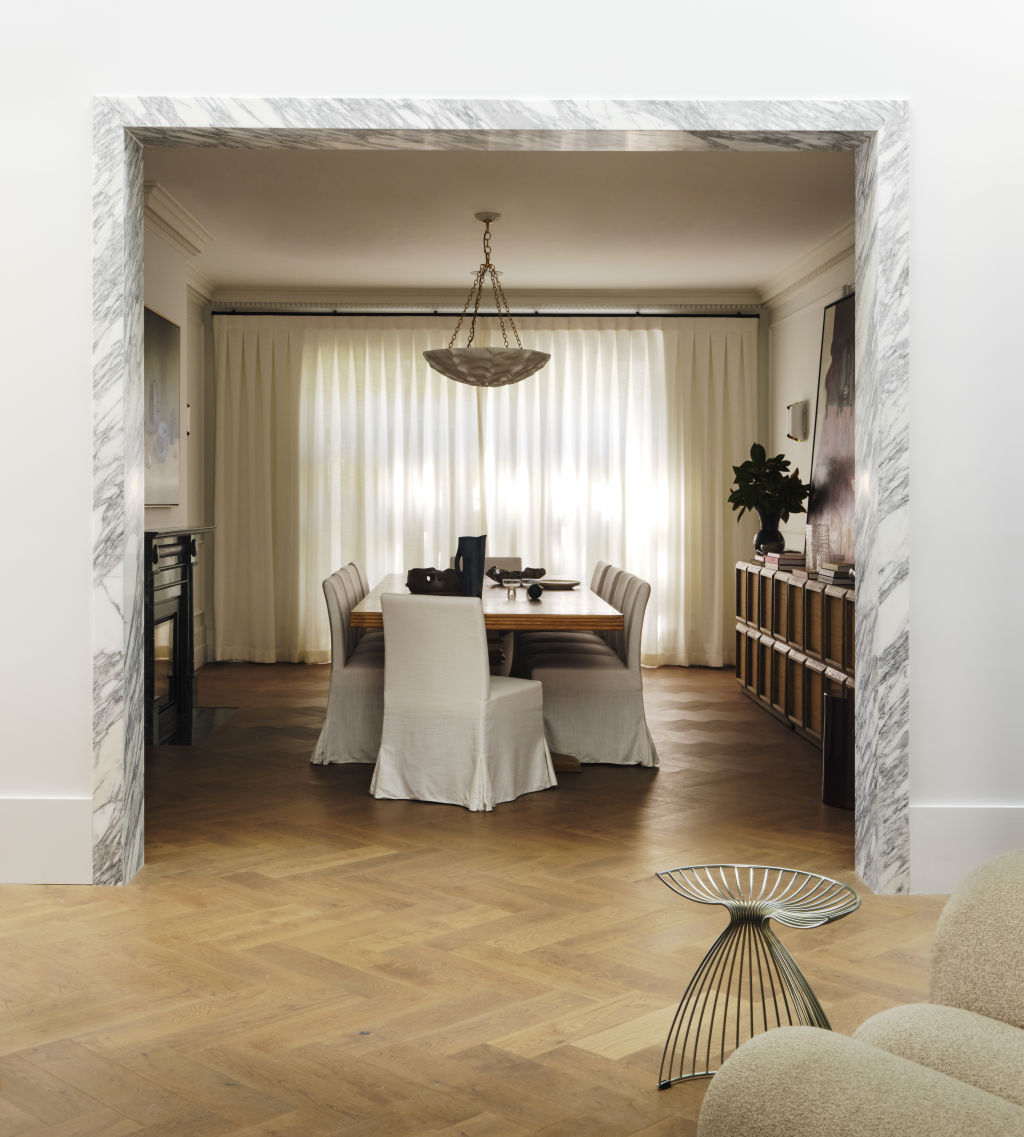
Marble has long been a go-to in architecture and home design. “The use of [the stone] as a building material is rooted in history,” says Anouska Milstein, director of Melbourne-based interior design studio Studio Ami. “[The] ruins of Ancient Rome and Greece are still preserved thanks to it.”
Today, designers are taking a more relaxed approach. “We’re seeing a stronger focus on celebrating veining and colour variation – raw finishes, honed textures, even marble offcuts.”
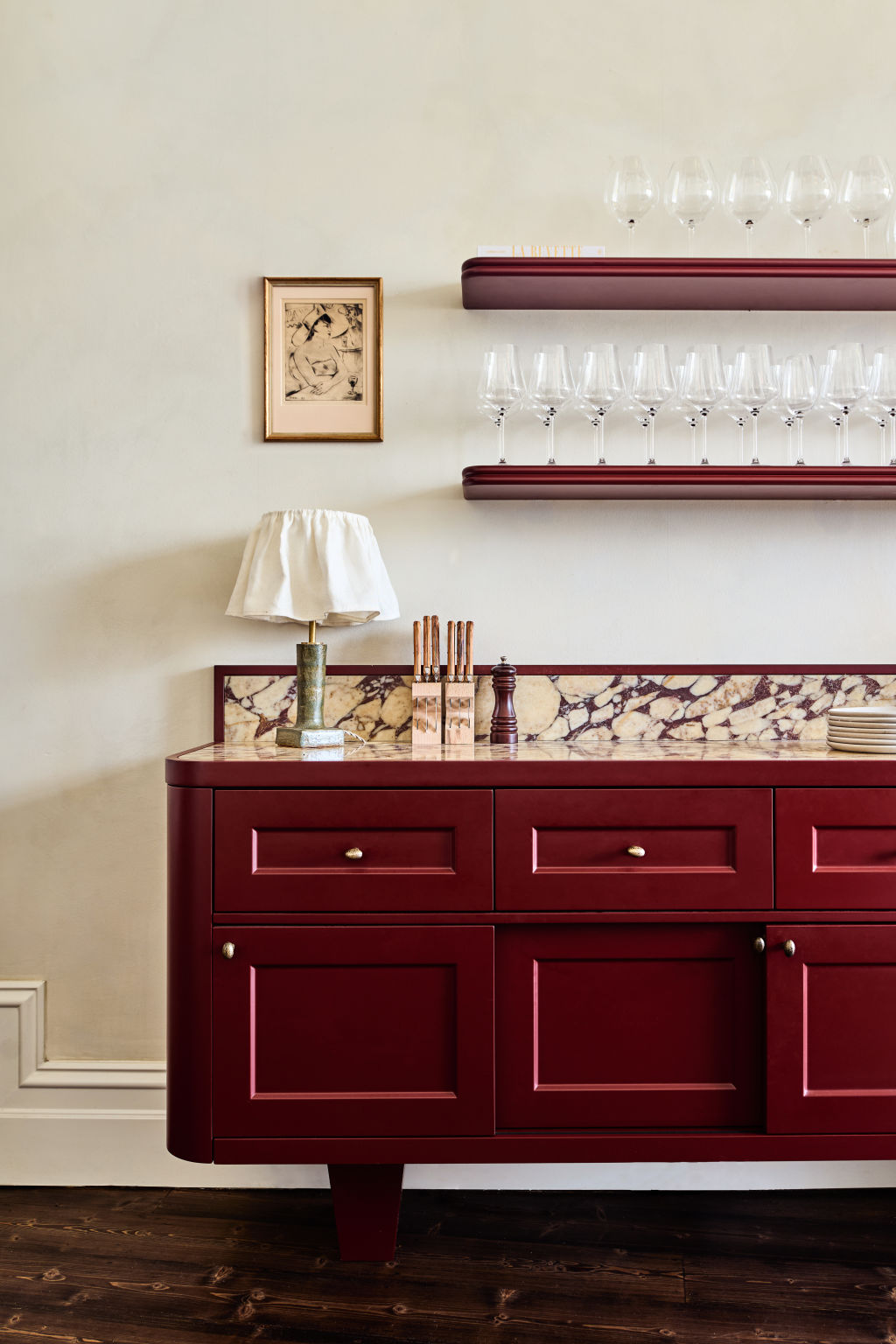
Milstein has explored marble’s versatility across several projects, often using it to bring character to pared-back spaces. Cedar Cottage – a coastal-inspired weatherboard home – features a minimalist kitchen grounded by a richly veined white marble benchtop and splashback, complete with scalloped edging. At Albert Park wine bar Wally’s, marble appears inside a custom-designed waiter’s station and across floating shelves. In another project titled Pied-a-Paris, the kitchen features a marble shelf that curves around the cooktop and sink, softening the formality of the stone.
“Marble can be integrated in so many ways, and it doesn’t have to be on a grand scale to make an impact,” she says. “You might just add a small shelf or bowl, or go big with flooring that shows off a full slab.”
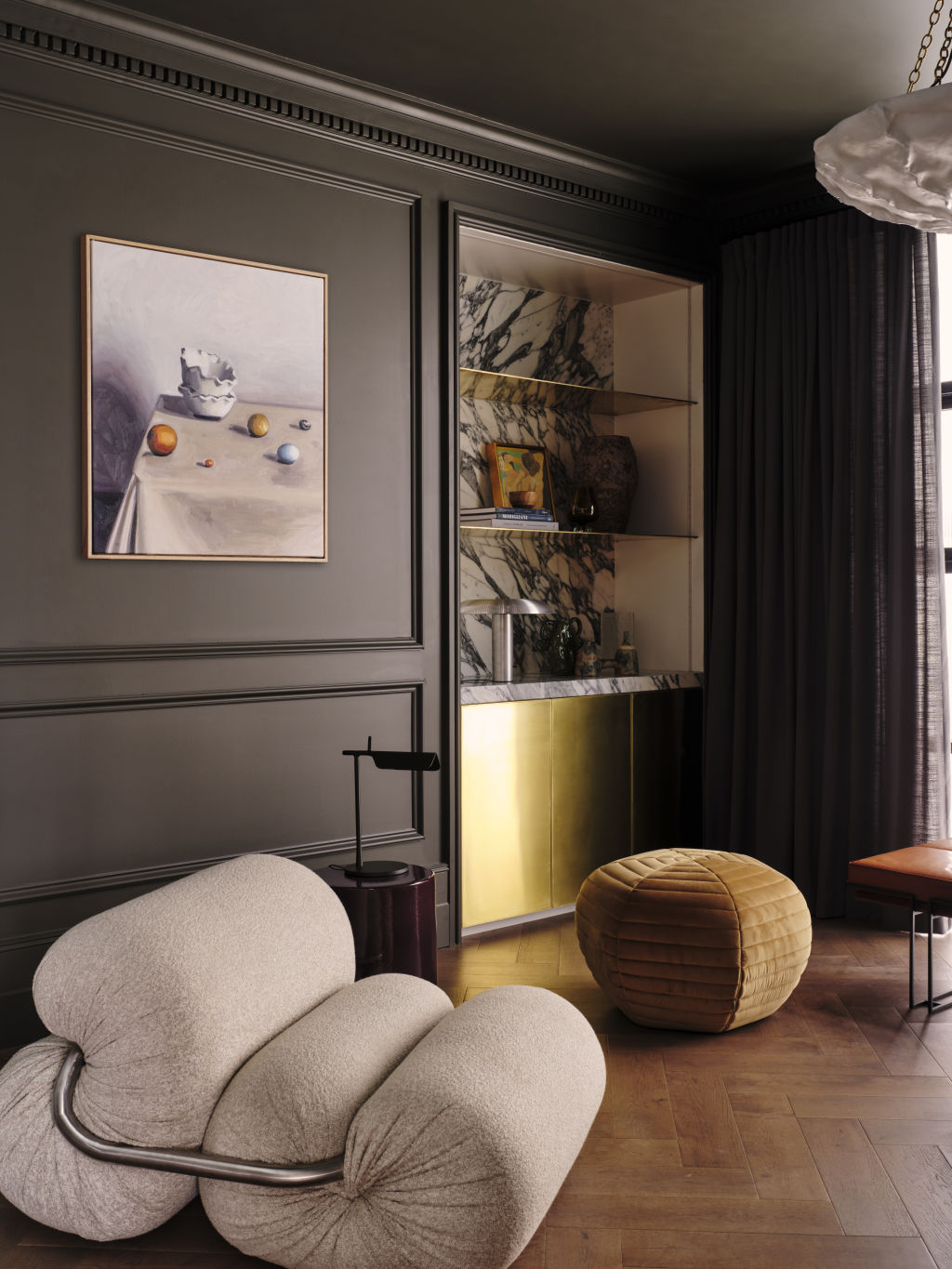
Philippa Moorfoot, co-founder of Australian furniture label Fleur Studios, known for its mixed-material pieces, agrees. “[Marble] has this individuality to it and it brings life to so many different homes,” she says. “Every design is completely unique and you don’t need a huge budget to add a little marble to your space.”
At Fleur Studios, that approach plays out across its collection. The Naomi bedside table pairs popular Calacatta Viola with oak or walnut, while the sculptural Cookie side table is carved entirely from a single slab of stone. For contrast, Moorfoot suggests pairing the brushed stainless steel Paris coffee table with other marble pieces. “There’s something about what metal does and the way it reflects light that really works with marble,” she explains. “They highlight each other.”
Moorfoot has seen clients lean into richer, more expressive tones. “Rosso Levanto, that burgundy marble, is so striking,” she says. “Then you’ve got cream travertines and line-cut marbles with subtle tones running through them.”
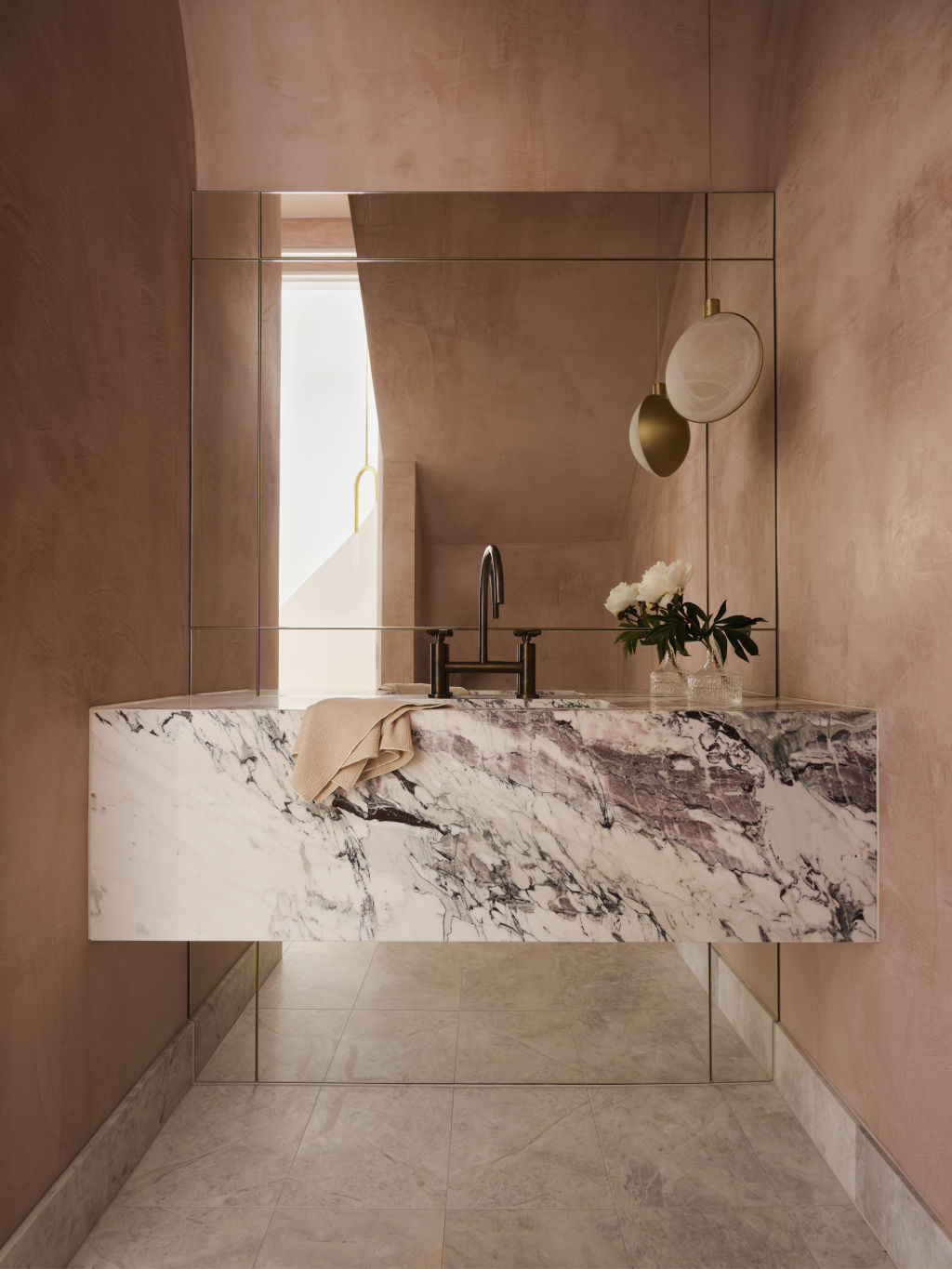
For Shona McElroy, principal designer at Sydney-based interior design firm Smac Studio, marble often sets the tone for an entire home. At Light House, deep green marble anchors the kitchen island and reappears throughout the home in different ways. “We tend to home in on one stone and let it guide the palette,” McElroy says. “It becomes a thread that links the whole house.”
Even smaller spaces like the powder room become an opportunity to go all-in. “It’s a space where we might let the stone be more detailed,” she adds. “We’ll pull colour from the vein and drench the room in it.” Different colour variations of the stone are also used in door frames, stairs and shelf backdrops.
The key across the board is letting marble be what it is: expressive, imperfect and full of character. “Don’t be scared of patina,” Milstein says. “A red wine ring or a bit of etching becomes part of your home’s story. That’s the beauty of natural materials.”
We recommend
We thought you might like
States
Capital Cities
Capital Cities - Rentals
Popular Areas
Allhomes
More
- © 2025, CoStar Group Inc.
